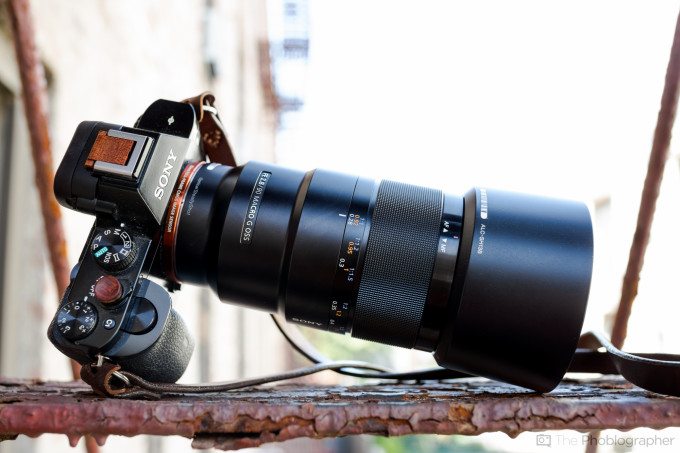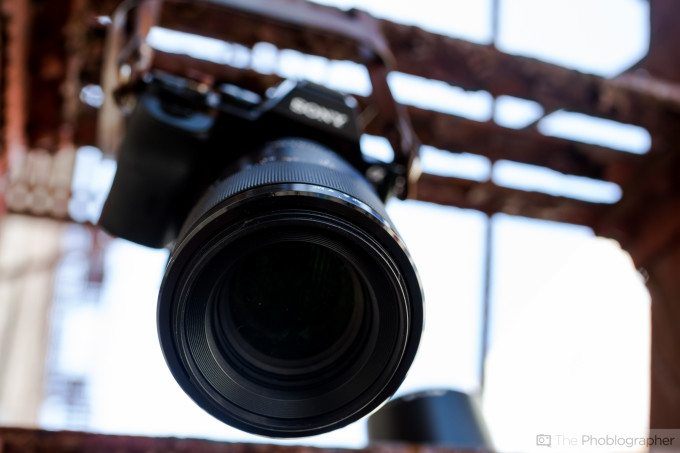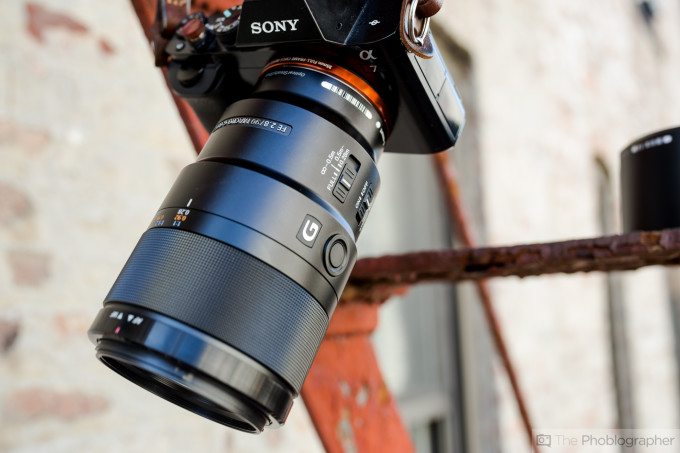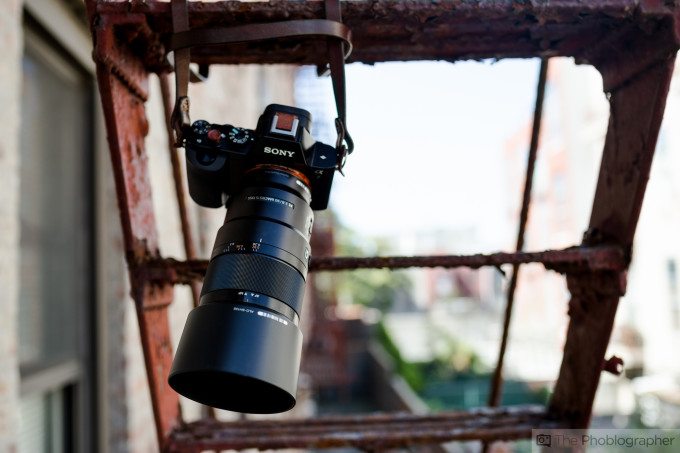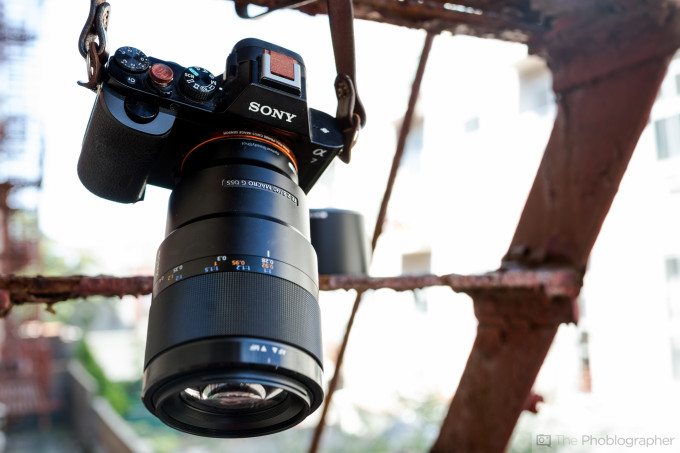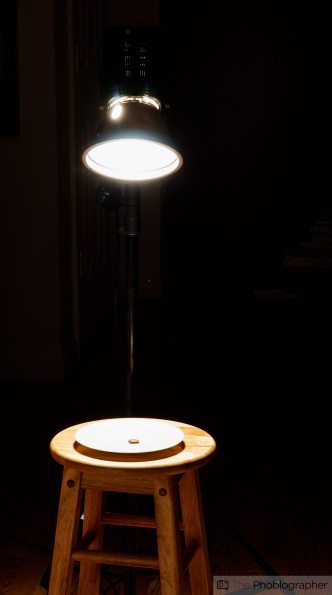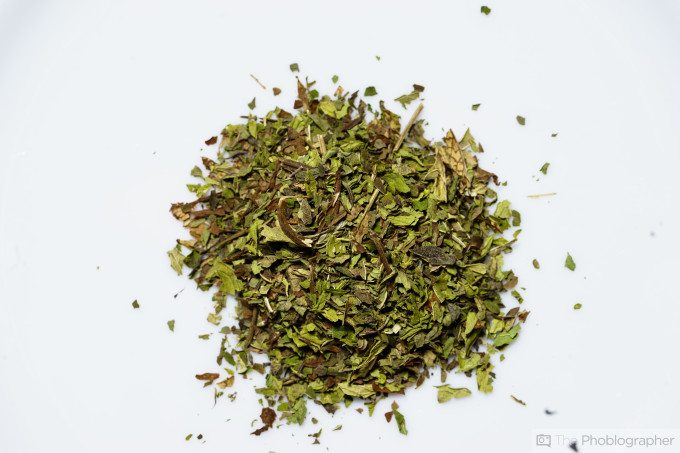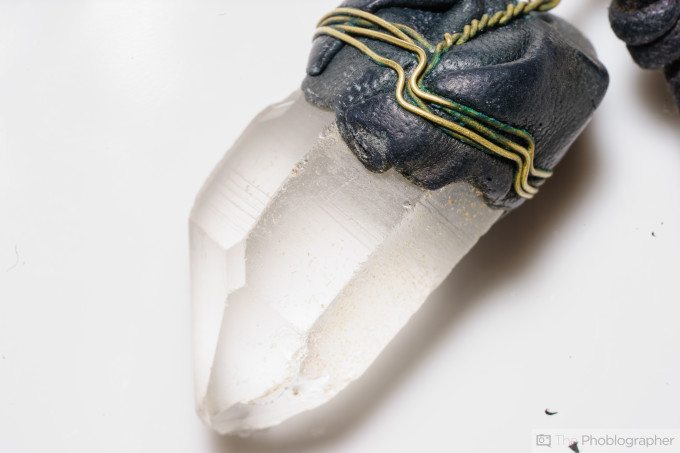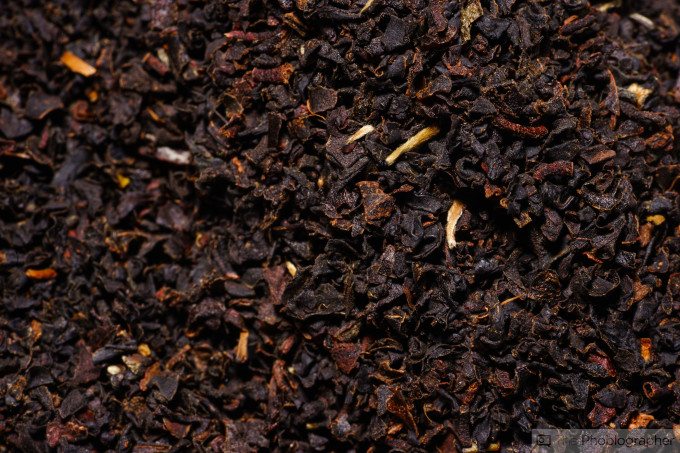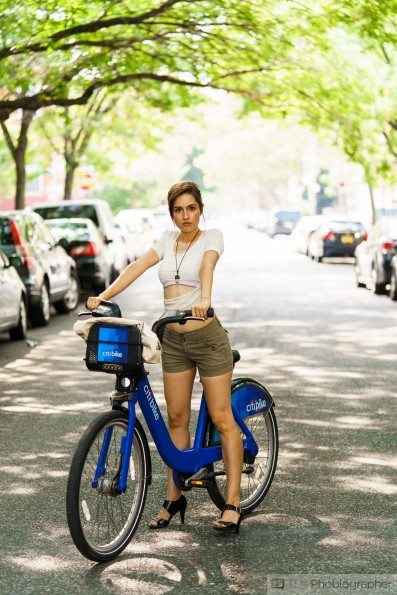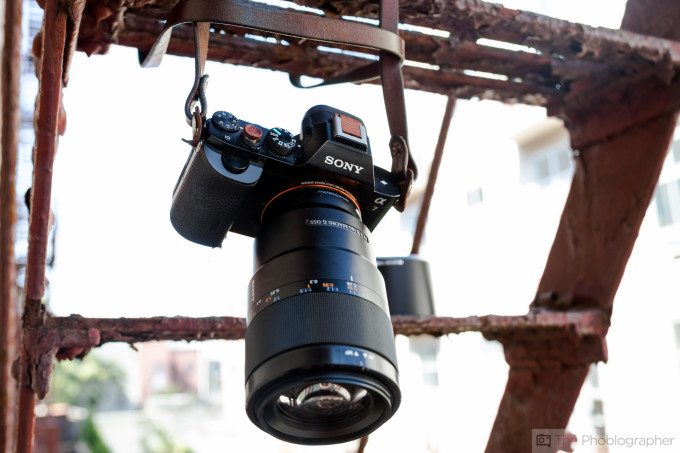As Sony continues to build out its lineup of FE-mount lenses, something that they’ve been missing is a macro lens–and the 90mm f2.8 Macro G OSS is their answer. Doubling as a portrait lens and effectively giving the system two fast aperture portrait options, the 90mm f2.8 OSS features optical stabilization that works in conjunction with the camera’s system and also for the A7 cameras that do not have stabilization.
With 9 aperture blades and 15 elements in 11 groups, this lens also features a bit of weather sealing in its design. Speaking of the design, this lens has internal focusing–which means that it doesn’t become larger as it focuses closer to a subject. But it also has one other really cool feature.
Pros and Cons

Pros
- Great image quality in most situations
- Sharp performance, again in most situations
- Optical stabilization
- Fast focusing performance
- Very silent stabilization
- Internal focusing design, and one that is pretty small for what it is. In fact, it’s about on par with a DSLR lens designed for the same purpose.
- Push/pull focusing ring
- Lightweight
- At last, a focusing scale that actually work!
Cons
- The colors just aren’t there compared to many of Sony’s other lenses. Perhaps this was done specifically for portraits, but you’re mostly going to rely on the capabilities of the Sony sensors–which are very good.
Gear Used
We tested the Sony 90mm f2.8 OSS with the Sony A7 and the Sony A7r Mk II along with the Paul C Buff Einstein E640 monolight.
Tech Specs
Taken from the B&H Photo listing of the lens
| Features | |
|---|---|
| Image Stabilization | Yes |
| Autofocus | Yes |
| Tripod Collar | No |
| Physical | |
|---|---|
| Filter Thread | Front:62 mm |
| Dimensions (DxL) | Approx. 3.11 x 5.14″ (79.0 x 130.5 mm) |
| Weight | 1.32 lb (602 g) |
| Packaging Info | |
|---|---|
| Package Weight | 2.15 lb |
| Box Dimensions (LxWxH) | 8.2 x 4.8 x 4.8″ |
Ergonomics
The Sony 90mm f2.8 Macro G OSS is a lens that seems very much designed like other macro lenses–and it essentially is. On the outside, it feels like a metallic tube with buttons and switches–and that’s because it pretty much is. We start our ergonomics tour with the front of the lens where we can find a 62mm filter thread.
Move to around the top and where we can spot the focusing ring, switches, and a little button right by the G designation. The focusing ring moves forward and backward to enable manual or autofocus focusing. This is one of Sony’s first lenses to incorporate this. We also get a working distance scale.
The switches are a focus limiter and OSS activation. When activated with a camera that has image stabilization, the two will work together. When the camera doesn’t have IS, the lens does all the work.
With the hood attached, the lens becomes a bit larger–and for what it’s worth we’d prefer it to be attached. When reversed, the hood covers the focusing ring area and the push/pull mechanism is pretty much not able to happen because you can’t get a good grip on it.
Build Quality
Though we didn’t run this lens under water or take it out into the rain, it surely survived commuting around the NYC subway system with it strapped to my side. The bumps that it encountered surely let us know that it’s worth the build when everyone and their mother floods Union Square and squishes against one another.
Ease of Use
For the most part, you’re slapping the lens onto the camera, focusing and shooting. But this Sony lens is a bit different. While most lenses need to be switched to MF mode via the menu system, this lens lets you do it by pushing/pulling the focusing ring. It’s a nice change, and one that we greatly appreciate. However, there are times when this can be done by accident, so just be careful when using the lens.
When shooting at the macro ranges, you’ll want to use the camera’s Live view and magnification feature over focus peaking. While there is optical stabilization, we found that it’s still best to use a tripod.
Autofocus
Here’s where we were very surprised. Yes, this is a lightweight lens, but longer focal lengths usually take some extra time to achieve focusing than wider focal lengths. This has to do with how depth of field works.
The Sony 90mm f2.8 Macro G OSS was always quick to focus and only missed the focusing around 8% of the time with the A7r Mk II and the A7. Of course, we always chose the focusing point manually and that’s what we’re going to tell everyone to do.
When it comes to shooting at the macro ranges, the focusing slows down quite a bit–though it’s still faster than a DSLR. Don’t bother autofocusing, just manually focus.
Image Quality
Given this is a macro lens, we’re sure that there are photographers that will obviously utilize that feature. For what it’s worth, the image quality up to f8 is incredible. At f11 it starts to fall apart and beyond that, it positively crumbles harder than many other 90mm macro lenses do. For this reason, you’ll want to focus stack your macro photos. We tested this with a powerful flash as you can see in the photo to the left.
To get even more details from the images, you’ll want to add around one extra stop of power from your flash to the image. This is a natural feature of adding a flash to create specular highlights in a scene.
At the macro range, you also really start to see the color muting that is more associated with portrait lenses. To get the most, you’ll need to process the images and work specifically with the color channels.
But don’t worry, it’s not all too bad!
Sharpness
When shooting portraits with this lens, we were pleasantly surprised with the sharpness. It’s sharp, but it’s not bleeding sharp–and that’s what we want from a portrait lens. When photographing a model, a lens that’s way too sharp can result in causing issues with the skin and the way it looks. But you generally won’t have this problem here. Sony created the perfect balance for portraiture and general shooting. For what it’s worth though, we expected this lens to be much sharper, but we’re still happy with the results in specific applications.
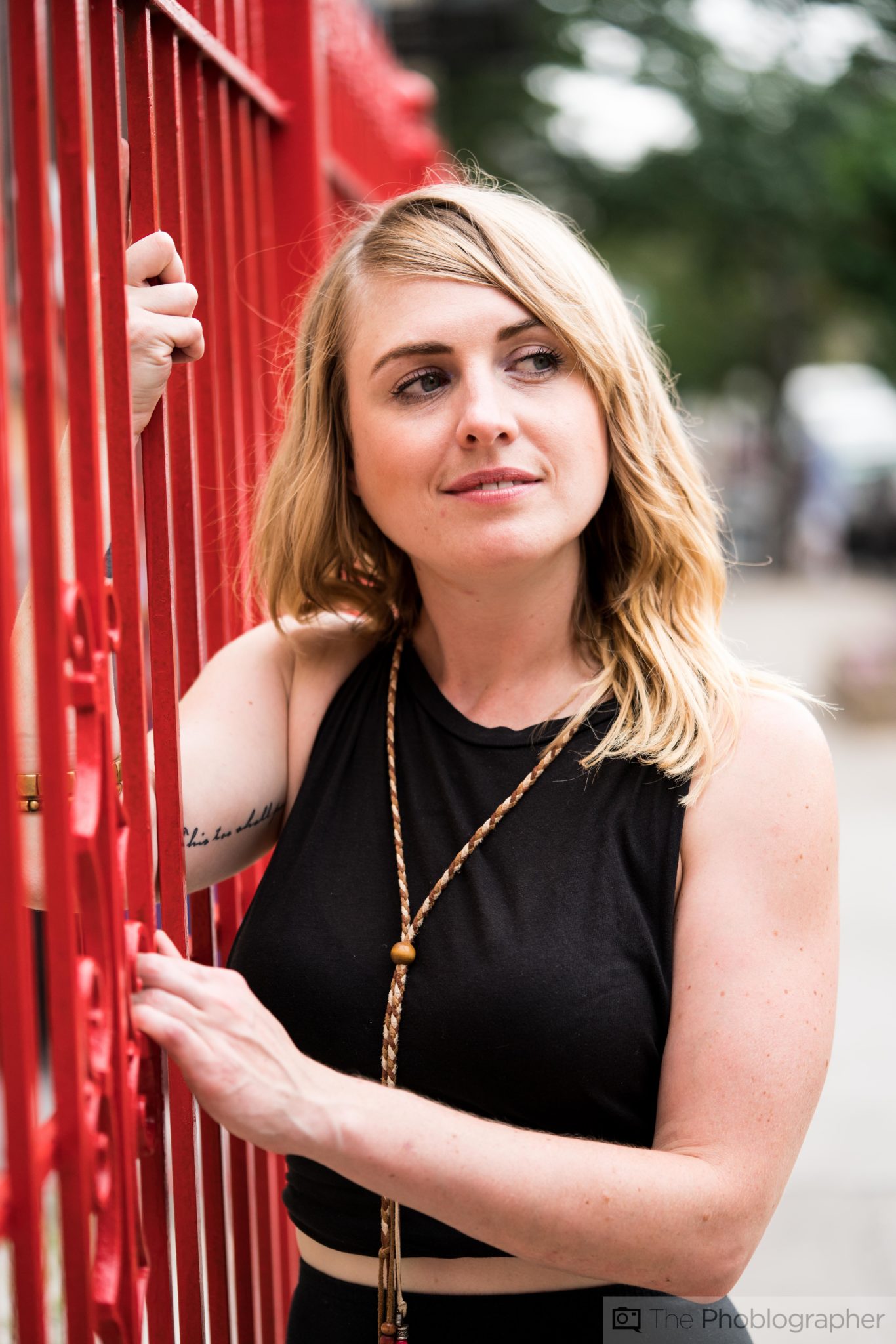
Below f8, the image quality and sharpness is on point. This is where you’ll really be taken with the image quality from the lens.
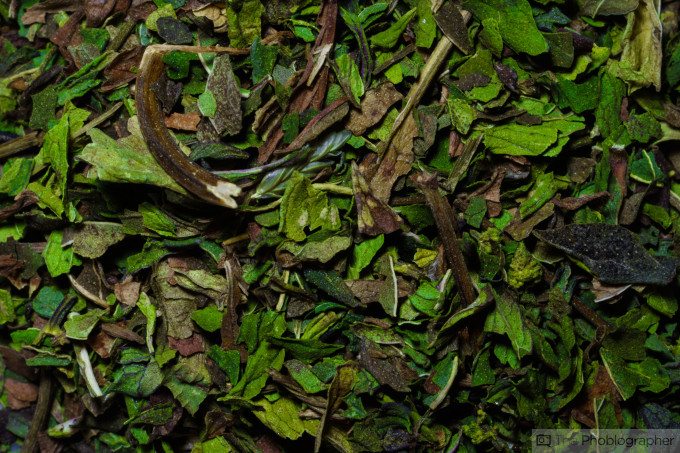
At f22 (yes a macro lens is only going down to f22) you’ll see the image quality really start to break apart. It happens at f11 quite a bit more than it would normally with other lenses, too.
Here are some more macro samples.
Bokeh
One of the strongest features of this lens has to be the bokeh. It’s absolutely beautiful, creamy and never hazy. Part of this is due to the nine aperture blade design. Along with the Zeiss 85mm f1.8 Batis lens, the Sony 90mm f2.8 Macro G OSS is an excellent portrait photography option. We personally lean more towards the Zeiss version, but the Sony lens is more affordable and offers macro features–adding to its versatility.
Both lenses will give you great image quality and fantastic bokeh, so it’s really just a personal preference here.
Color Rendition
We’re very, very used to Sony lenses offering us beautifully saturated colors that you’ll absolutely fall in love with each and every time. But when it comes to this lens, you’ll experience more muted colors. Again, that translates into less work when it comes to portraiture. If you work with the color channels to fix skin tones in Adobe Lightroom, you’ll really appreciate this.
Color Fringing
In our tests, we found no color fringing–which means a lot to macro shooters. Hooray!
Conclusions
Likes
- Good image quality up to a certain point. In fact, it’s really good and then falls off very hard.
- Macro capabilities
Dislikes
- It’s kind of a jack of all trades and master of none.
The Sony 90mm f2.8 G Macro OSS is a nice lens for portraiture, and that’s really probably all you should use it for unless you’re shooting macro images and focus stacking. Beyond f8, the image quality starts to really fall apart harder than offerings from other companies. If you’re a macro shooter, you’d want great saturation to the images and the results from your lenses, but if you’re a portrait shooter, you want a bit less saturation. Sony did a good job with the balance, but for what it’s worth I personally like the latest Tamron offering the most.
In terms of construction, this lens feels great in the hand and the switches and focusing ring push/pull mechanism are great additions. We’re happy that Sony is bringing this to their lenses.
Focusing performance is also strong at all points until the macro ranges start to become a thing. Then, and only then, does it really slow down. But that’s not unique to Sony, it’s something industry wide.
Overall, this isn’t a bad lens at all. But it’s not one of Sony’s strongest lenses in our eyes. Zeiss’s 85mm f1.8 Batis is better in our eyes; but that’s just our humble opinion.
We rate the Sony 90mm f2.8 Macro G OSS at four out of five stars. It’s a good lens, but there are better options out there. Want one? Check the B&H Photo listing for more.
Recommended Cameras and Accessories
Sony A7r Mk II: The highest resolution camera from Sony is really the best one to get the most from this lens.


